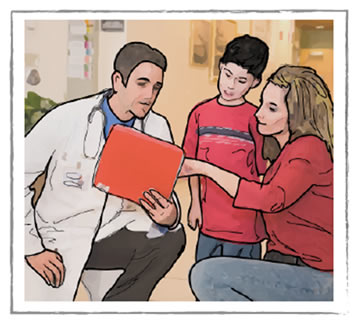What is type 1 diabetes?

Page 2 of 2

Poor glycaemic control has been related to short-term consequences such as hypoglycaemia and diabetic ketoacidosis, as well as serious health consequences later in life such as limb amputation, retinopathy, and renal failure.
Completion of recommended self-care tasks is considered critical to glycaemic control, with the primary tasks which help to maintain glycaemic control, such as monitoring blood glucose levels, injecting insulin, and dosing insulin according to meter results or other factors, needing to be carried out several times per day, often around mealtimes in varied contexts and locations.
(See Carlos case study for an example of someone diagnosed with type 1 diabetes).
Topic completed. Click on link at bottom of page to return to topic menu.
